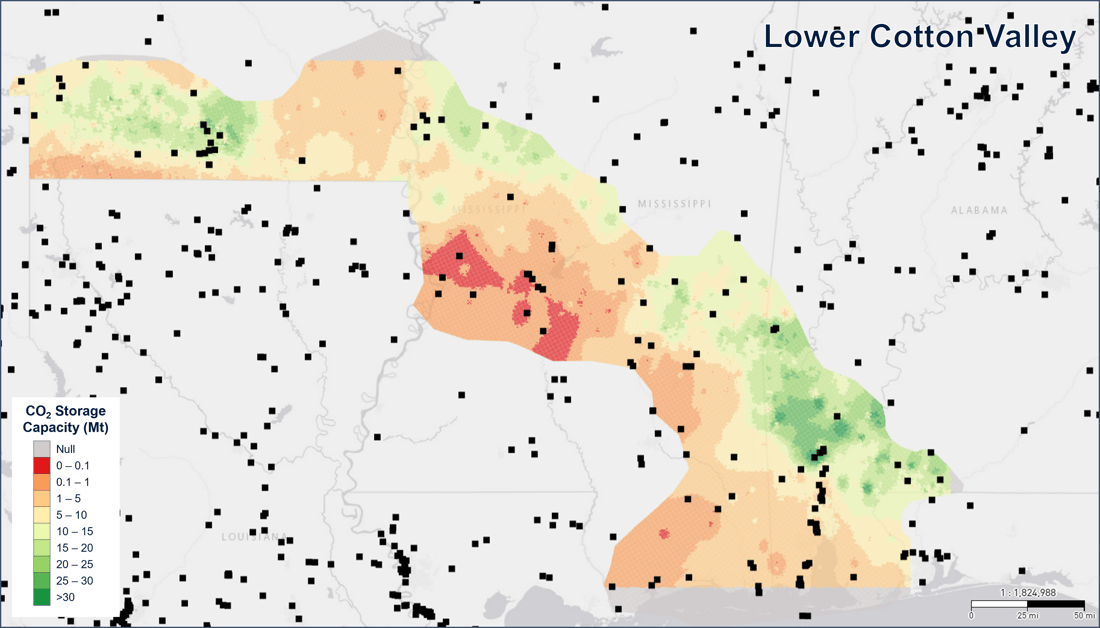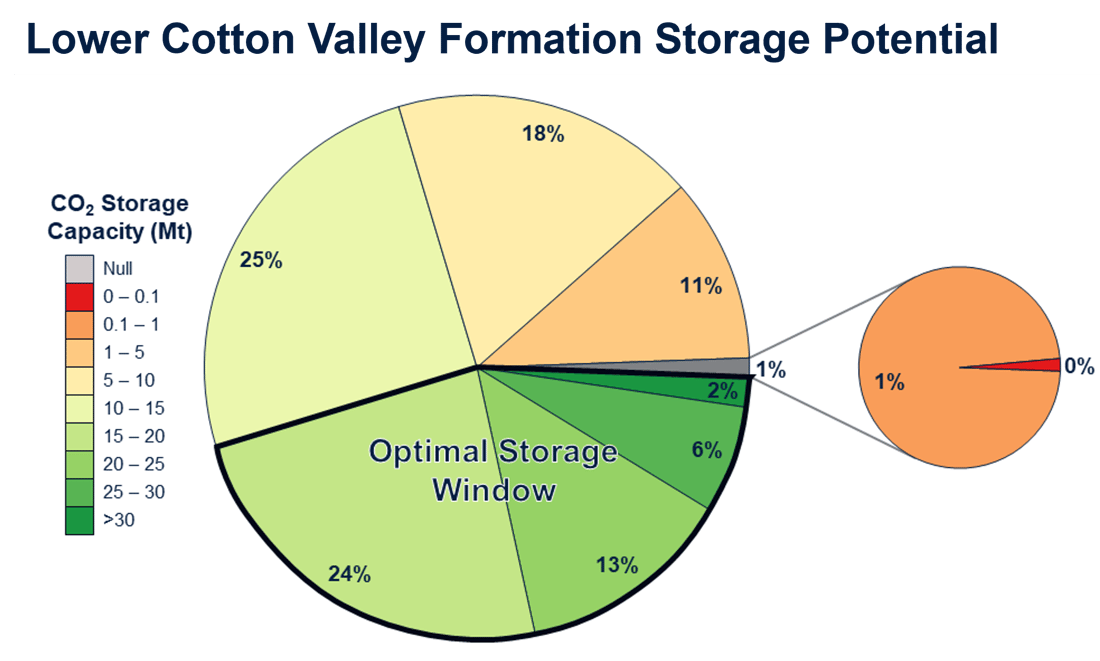Investigating the storage potential of a prominent saline aquifer, the Lower Cotton Valley Formation
Carbon sequestration remains a prominent focus in current industry news, with numerous companies investing in carbon capture technology, pipeline infrastructure, and preparing for the establishment of injection wells through Class VI well permit submissions. Supported by advantageous government subsidies such as the Inflation Reduction Act and 45Q , this trend incentivizes further growth within the industry of permanent carbon storage in the subsurface. The pivotal question arises: what is the extent of CO2 storage capacity beneath the surface?
Utilizing TGS' Carbon Storage solution provides a straightforward answer to this question. Through an examination of the Lower Cotton Valley Formation – a notable saline aquifer storage target spanning southern Arkansas, Mississippi, and Alabama – it is revealed that the reservoir boasts an estimated storage capacity exceeding 290,000 mega tons (Mt) in this area alone1. Beyond its substantial storage potential, the reservoir exhibits favorable characteristics, including an average net thickness of 1,200 feet, porosity averaging 18%, median temperature of 180°F, and an average pressure of 4,600 psi, rendering it an exceptionally promising carbon sequestration target.

1CO2 volumetric map of the Lower Cotton Valley Formation across Arkansas, Mississippi, and Alabama.
An analysis of 65 CO2 emissions sites1 located within the optimal storage potential window (>15 Mt storage capacity) in the interpreted Lower Cotton Valley Formation2 area reveals a combined CO2 emissions output of approximately 13.8 Mt in Alabama, 6.9 Mt in Arkansas, and 1.2 Mt in Mississippi for the year 2022.

2CO2 volumetrics from the Lower Cotton Valley Formation broken down to percent present. Optimal Storage Window is defined as having a storage capacity >15 Mt.
Remarkably, this output represents only a fraction of the storage capacity available within the Lower Cotton Valley Formation in this region. To reach capacity, it would necessitate over 13,000 years of sustained emissions output that is directly injected into the formation, not accounting for potential changes in geologic parameters or the impact of CO2 injection. Many reservoirs in the subsurface offer significant storage potential, capable of sustaining perpetual carbon sequestration efforts for centuries. This presents a promising avenue for companies, governments, and individuals to achieve their net-zero objectives.
For more information on our Carbon Solution or to schedule a demo, contact us at WDPSales@tgs.com.


